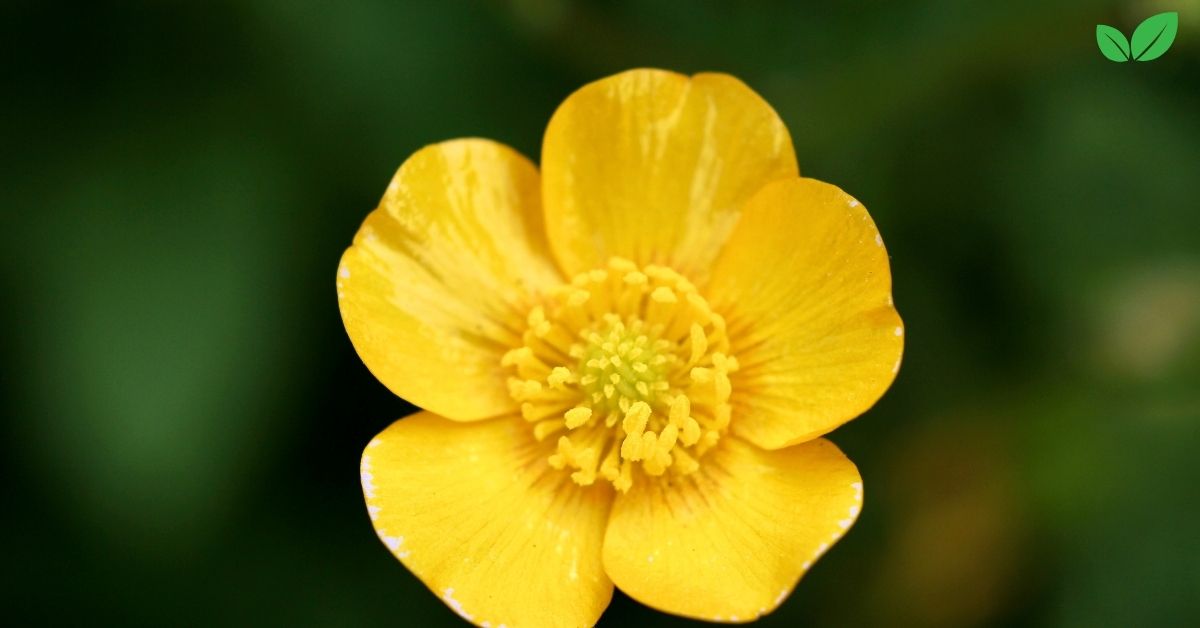Introduction to Buttercups
Buttercups, belonging to the Ranunculus genus in the family Ranunculaceae, are bright and vibrant flowers commonly found across temperate regions of the world. The name “buttercup” typically evokes images of their vivid yellow blooms dotting meadows, fields, and woodland edges. These perennials and annuals are renowned not only for their beauty but also for their adaptability to various environments. The genus includes more than 400 species, with the most common types being the meadow buttercup (Ranunculus acris), creeping buttercup (Ranunculus repens), and bulbous buttercup (Ranunculus bulbosus).
While they are admired for their aesthetic appeal, their ecological role in supporting biodiversity and maintaining the health of ecosystems is less widely recognized. Buttercups occupy a critical environmental niche, offering sustenance to a variety of pollinators, enhancing soil health, and contributing to ecosystem dynamics. However, despite their resilience, buttercup populations face challenges related to habitat loss, agricultural practices, and environmental change.
In this article, we will explore the biology and environmental role of buttercups, their significance in ecosystems, the threats they face, and conservation strategies aimed at preserving these valuable plants.
The Botanical Characteristics of Buttercups
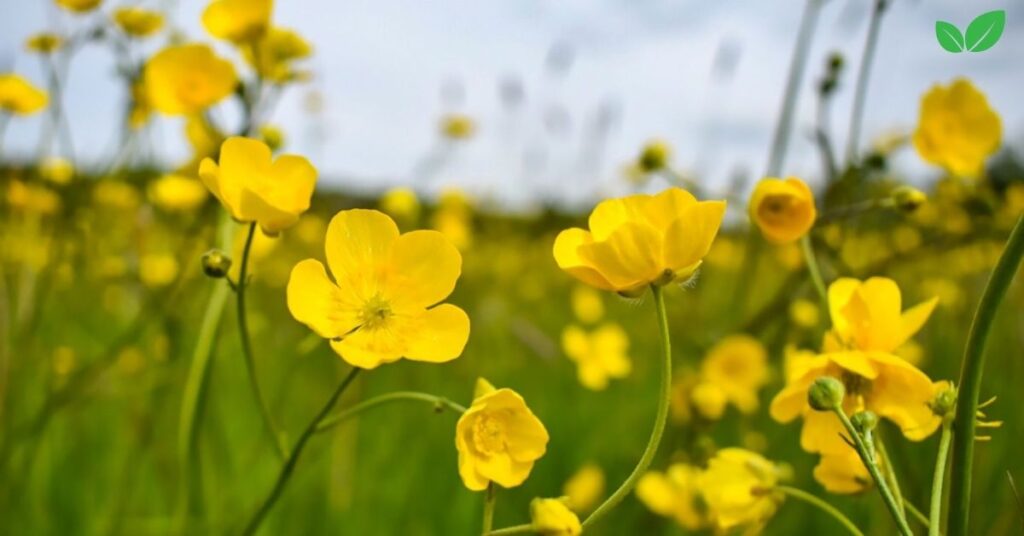
Morphology and Growth Habit
They are herbaceous plants that exhibit a wide variety of growth forms. Depending on the species, they can be annuals, biennials, or perennials. Most buttercups thrive in moist soils, and their habitats can range from meadows and pastures to woodland edges and wetlands. Their preference for moist soils means they often flourish in areas that experience periodic flooding or where the water table is high.
The flowers of the buttercup are one of their most defining features. Typically, the blossoms are bright yellow, though some species have white or orange flowers. Each flower consists of five to seven glossy petals, which often appear to glisten in sunlight due to the plant’s unique reflective petals. Beneath the petals are numerous stamens and pistils, contributing to the buttercup’s reproductive success. The glossy appearance of buttercup petals is caused by a thin film of air just beneath the epidermis, which reflects light and gives the petals their distinctive sheen.
The leaves of buttercups are typically lobed or finely divided, often giving the plant a delicate, fern-like appearance. In some species, the leaves are basal, forming a rosette close to the ground, while others have leaves along the length of the stem.
Reproduction and Pollination
They reproduce primarily through seed production, though some species, like the creeping buttercup, also propagate vegetatively through runners. Pollination is predominantly carried out by insects, including bees, flies, and beetles. They are particularly attractive to pollinators due to their bright colors and the abundance of nectar and pollen they provide. The flowers’ open structure allows easy access to nectar for a wide range of pollinators, making buttercups important plants for supporting biodiversity.
After successful pollination, the plant produces dry, single-seeded fruits known as achenes. These achenes are dispersed by wind, water, or attachment to animals, which helps buttercups colonize new areas. Their ability to reproduce both sexually and asexually enhances their capacity to spread and establish themselves in various habitats, contributing to their resilience and adaptability.
The Environmental Niche of Buttercups
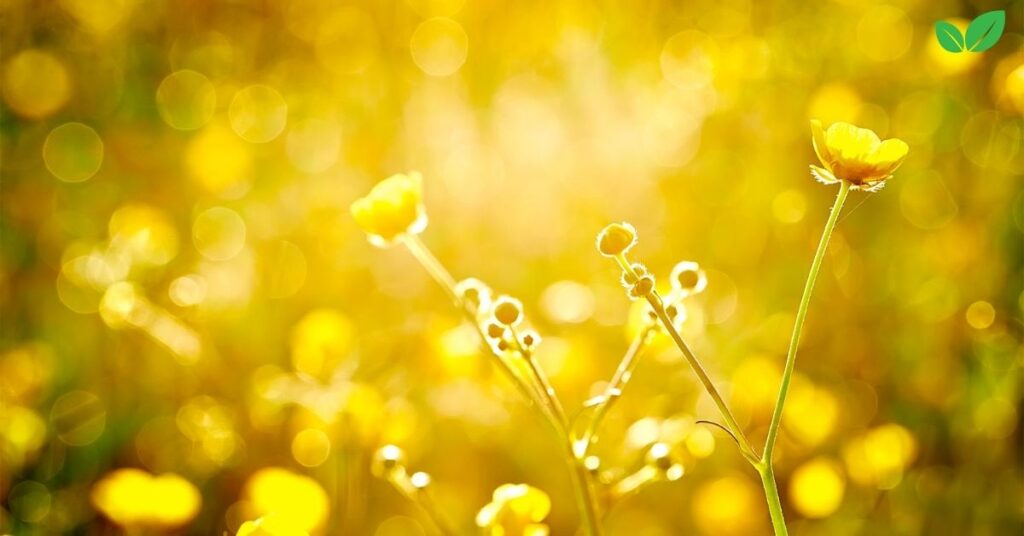
Habitat Preferences
They thrive in a variety of habitats, making them a highly versatile group of plants. They are commonly found in meadows, grasslands, pastures, wetlands, and woodland edges. Many species of buttercups prefer moist soils, though some, such as the bulbous buttercup, are adapted to drier environments. This adaptability to different moisture levels allows buttercups to occupy a wide range of ecological niches.
In wetland ecosystems, they play a significant role by contributing to soil stabilization and water retention. Their fibrous root systems help prevent soil erosion in areas prone to flooding or heavy rainfall. In meadows and grasslands, they often grow alongside other wildflowers, contributing to the rich biodiversity of these environments. Their presence in these ecosystems supports a wide range of pollinators and other insects, creating a vibrant, interconnected web of life.
Soil Health and Ecological Functions
They contribute to soil health in several ways. First, their extensive root systems help improve soil structure by increasing aeration and allowing for better water infiltration. This is particularly important in wetland and floodplain habitats, where water management is crucial for preventing soil erosion and maintaining ecosystem stability.
Furthermore, they often grow in nutrient-poor soils, where they contribute to the nutrient cycling process. As they decompose, their organic matter enriches the soil, making it more fertile for other plant species. This contribution to soil fertility is especially valuable in grassland ecosystems, where nutrient availability is limited, and plants must rely on the recycling of organic material for their growth.
They can also influence the chemical composition of the soil. Many species of buttercups contain chemical compounds called ranunculin, which can have allelopathic effects, inhibiting the growth of certain plant species around them. This can reduce competition for resources, allowing buttercups to establish themselves more effectively in certain areas.
Role in Pollinator Support and Biodiversity
They are vital in supporting a diverse array of pollinators, making them a keystone species in the ecosystems they inhabit. The open, accessible flowers of buttercups provide an essential source of nectar and pollen for bees, hoverflies, beetles, and other insects. By attracting these pollinators, buttercups play a crucial role in the reproduction of many other plant species in their habitats.
The bright yellow color of buttercup flowers is particularly attractive to bees, which are drawn to flowers in the yellow-blue spectrum. These insects contribute to the pollination of buttercups and other co-flowering plants, enhancing biodiversity within the ecosystem. Their role in supporting pollinators is especially important in agricultural landscapes, where they can help sustain bee populations that are essential for crop pollination.
In addition to supporting pollinators, buttercups provide food and habitat for other invertebrates. Various insects, including beetles and caterpillars, feed on the leaves, stems, and flowers of buttercups, while the plants themselves offer shelter for small invertebrates and their larvae. The presence of these insects, in turn, attracts birds and small mammals, which rely on them for food, further enriching the biodiversity of the ecosystem.
Ecological Significance of Buttercups
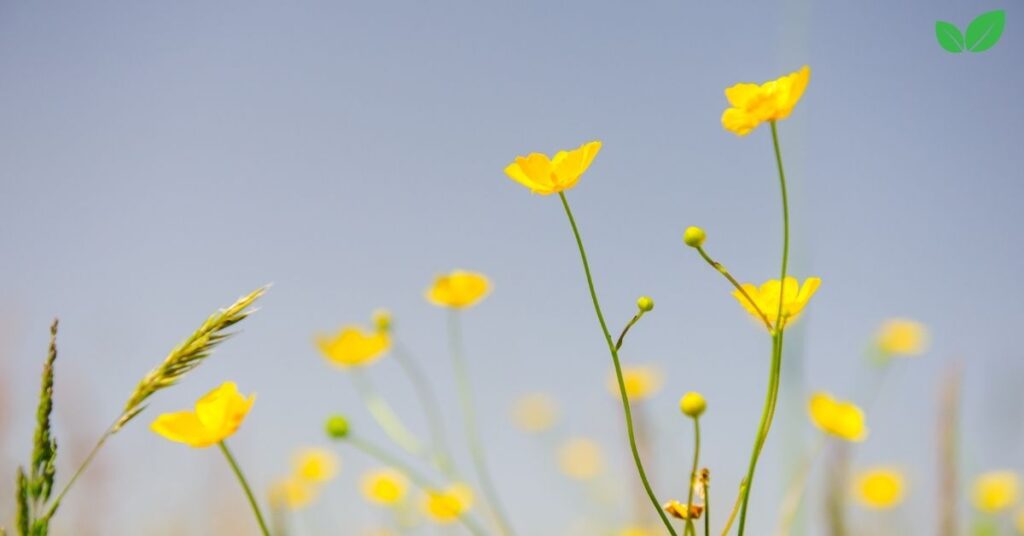
Interactions with Other Plant Species
They often grow in association with other wildflowers and grasses, creating diverse plant communities that support rich biodiversity. In meadows and grasslands, buttercups contribute to a mosaic of vegetation that provides habitat for a wide variety of animal species. Their ability to grow alongside other plants without outcompeting them ensures that these ecosystems remain balanced and diverse.
However, some species of buttercups can become invasive in certain environments, particularly in agricultural settings. For example, the creeping buttercup can spread aggressively in pastures and lawns, outcompeting grasses and other desirable plants. This can reduce the biodiversity of the affected area and lead to challenges for farmers and land managers who wish to maintain healthy, productive pastures.
Role in Ecosystem Dynamics
They are integral to the dynamics of the ecosystems they inhabit. By providing nectar and pollen, they support pollinators that are essential for the reproduction of many plant species. This, in turn, enhances plant diversity and contributes to the overall health of the ecosystem.
In addition to their role in pollinator support, it contribute to the food web by providing sustenance for herbivores. Insects, such as beetles and caterpillars, feed on its foliage, while larger herbivores, including rabbits and deer, may occasionally graze on its plants. However, many species of buttercups contain toxic compounds, which can deter herbivores from consuming large quantities of the plants. This toxicity serves as a defense mechanism, allowing buttercups to thrive in areas where herbivory pressure is high.
They also play a role in regulating ecosystem processes, such as nutrient cycling and soil stabilization. Their contribution to soil health through organic matter decomposition and erosion prevention helps maintain the stability of the ecosystems they inhabit. In wetlands and riparian zones, they help prevent the loss of soil during periods of heavy rainfall or flooding, which is crucial for maintaining the integrity of these ecosystems.
Threats to Buttercup Populations
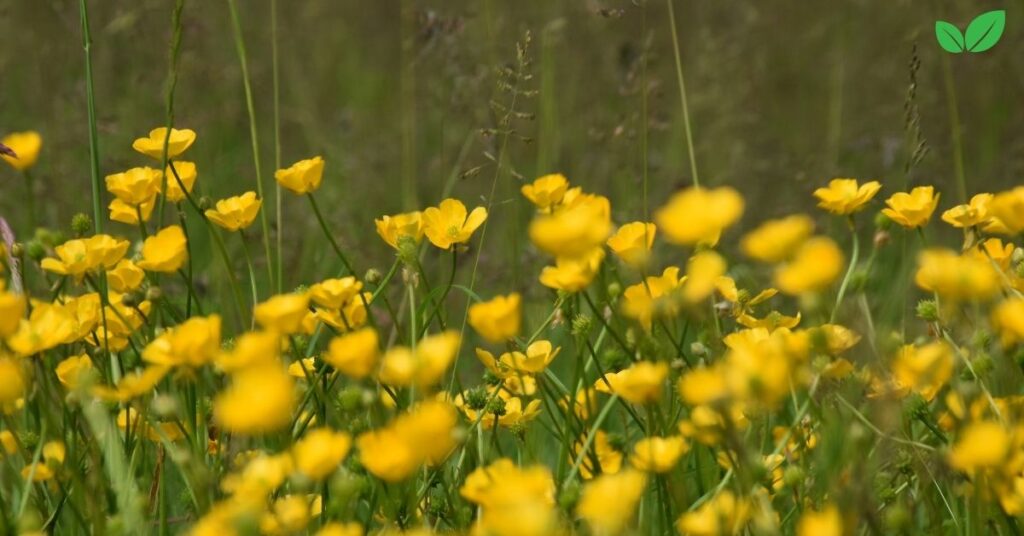
Habitat Loss and Agricultural Practices
One of the most significant threats to their populations is habitat loss due to agricultural expansion, urbanization, and land-use change. As natural habitats such as meadows, grasslands, and wetlands are converted into agricultural fields or developed for human infrastructure, they lose the spaces they need to thrive. The intensification of agricultural practices, including the use of herbicides and fertilizers, further contributes to the decline of buttercup populations by altering soil chemistry and reducing plant diversity.
In agricultural landscapes, they are often viewed as weeds, particularly species like creeping buttercup, which can invade pastures and croplands. Farmers and land managers may use herbicides or mechanical removal methods to control their populations, which can lead to further declines in these plants. While controlling invasive buttercups may be necessary in some cases, these practices can have unintended consequences for the broader ecosystem, including the loss of pollinator habitat and reduced biodiversity.
Climate Change
Climate change poses another significant threat to buttercup populations. As global temperatures rise, changes in precipitation patterns, soil moisture levels, and the frequency of extreme weather events can alter the habitats in which they thrive. In particular, species that rely on moist soils, such as the meadow buttercup, may be vulnerable to drought conditions caused by climate change.
Shifts in temperature and precipitation can also affect the timing of flowering and pollinator interactions, a phenomenon known as phenological mismatch. If they bloom earlier or later than usual due to changing climate conditions, they may not coincide with the activity of their primary pollinators, which can disrupt the pollination process. This mismatch can lead to reduced seed production, which over time may result in population declines for both buttercups and the pollinators that rely on them.
Furthermore, climate change is likely to impact the distribution of these species. Some species may be forced to migrate to cooler or wetter areas as their current habitats become unsuitable due to warming temperatures and changing rainfall patterns. However, the ability of buttercups to shift their ranges may be limited by barriers such as urban development, intensive agriculture, or natural geographic obstacles. This could result in the fragmentation of populations and reduce genetic diversity, making them more vulnerable to extinction.
Pollution and Soil Degradation
Pollution, particularly from agricultural runoff, poses a threat to buttercup populations in many regions. The use of chemical fertilizers, herbicides, and pesticides in farming practices can degrade soil quality and alter the nutrient balance, making it difficult for them to survive. Runoff from agricultural fields can also lead to the accumulation of pollutants in nearby wetlands and waterways, where they are commonly found. These pollutants can harm the plants directly or disrupt the delicate ecosystems they depend on.
Soil degradation, including compaction and erosion, is another factor that threatens them. In areas where heavy machinery is used for agriculture or development, the soil may become compacted, reducing the ability of water and air to penetrate the soil and limiting root growth. Erosion caused by poor land management practices can also strip away the topsoil, which contains the nutrients that they need to grow.
Conservation of Buttercup Populations
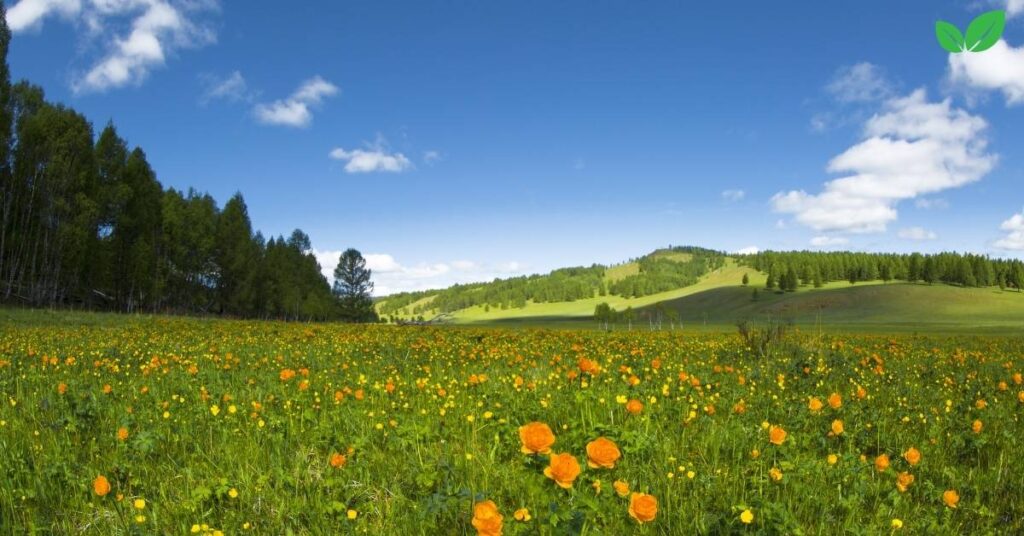
Habitat Restoration and Protection
One of the most effective strategies for conserving their populations is the restoration and protection of their natural habitats. Efforts to restore meadows, grasslands, wetlands, and riparian zones can provide buttercups with the conditions they need to thrive. Habitat restoration often involves planting native species, removing invasive plants, and managing land to promote biodiversity.
Protecting areas where buttercups grow naturally, such as nature reserves and conservation areas, can help preserve these species in the long term. Legal protections that prevent the destruction of key habitats are critical for ensuring that buttercups and the ecosystems they support continue to flourish. For example, conservation organizations and government agencies may work together to designate protected areas where agricultural or industrial activities are limited, allowing natural ecosystems to recover.
In addition to large-scale habitat restoration, individual landowners can play a role in conserving them by incorporating these plants into wildflower meadows or pollinator gardens. These small-scale restoration efforts can provide valuable habitat for them and other native plants, as well as the pollinators that rely on them.
Sustainable Agricultural Practices
Promoting sustainable agricultural practices is key to ensuring the long-term survival of buttercups and other wildflowers. By reducing the use of chemical fertilizers, herbicides, and pesticides, farmers can help protect the soil quality and biodiversity that they depend on. Practices such as crop rotation, reduced tillage, and the use of organic fertilizers can improve soil health and reduce the need for chemical inputs.
Maintaining buffer zones around agricultural fields, where wildflowers like them can grow undisturbed, can also benefit both the plants and the wildlife that depend on them. These buffer zones provide habitat for pollinators and other beneficial insects, which in turn can help improve crop yields by enhancing pollination services. By fostering a more diverse and resilient agricultural landscape, farmers can contribute to the conservation of buttercups and other species.
Public Awareness and Education
Raising public awareness about the ecological value of buttercups and the threats they face is an important component of conservation efforts. Educational campaigns that highlight the role of buttercups in supporting pollinators, improving soil health, and enhancing biodiversity can inspire individuals and communities to take action to protect these plants.
Public engagement in conservation initiatives, such as citizen science projects, can also help gather valuable data on buttercup populations and their distribution. By encouraging people to document sightings of buttercups and monitor their local wildflower meadows, conservation organizations can track changes in population health and identify areas in need of protection or restoration.
Programs that educate farmers, gardeners, and landowners about the benefits of conserving wildflowers, including them, can promote more sustainable land management practices. Workshops, informational brochures, and community events can help spread knowledge about how to incorporate buttercups into pollinator gardens or wildflower meadows, creating more habitat for these important plants.
Research and Monitoring
Continued research on their ecology, including their interactions with pollinators, soil conditions, and climate change, is essential for understanding how best to conserve these plants. Long-term monitoring programs that track the health of their populations and their habitats can provide valuable insights into how environmental changes are affecting these species.
Researchers can also investigate the potential for phenological mismatches between them and their pollinators, studying how changes in climate and habitat conditions may be altering the timing of flowering and pollination. Understanding these dynamics can help inform conservation strategies that address the specific challenges faced by buttercups in different regions.
The Future of Buttercups in a Changing World
The future of buttercups will depend on our ability to address the environmental challenges they face and implement effective conservation measures. Climate change, habitat loss, and agricultural practices continue to pose significant threats to buttercup populations. However, with concerted efforts to restore and protect their natural habitats, reduce pollution, and promote sustainable land use, it is possible to ensure that these vibrant wildflowers remain a part of our ecosystems for generations to come.

As a keystone species that supports pollinators, enriches soil health, and contributes to biodiversity, buttercups are more than just a symbol of beauty in nature. They play a vital role in maintaining the balance and health of the ecosystems they inhabit. By understanding and appreciating the ecological importance of buttercups, we can take meaningful steps to conserve them and the habitats they call home.
Conclusion
Buttercups, with their distinctive yellow blooms and adaptability to a range of habitats, are much more than ornamental flowers. They serve as essential contributors to biodiversity, supporting pollinators, enriching soils, and helping to regulate ecosystem dynamics. Despite their resilience, they face numerous challenges, from habitat loss and climate change to pollution and invasive species.
Through habitat restoration, sustainable agricultural practices, public awareness campaigns, and ongoing research, we can ensure the conservation of buttercups and the valuable ecological functions they perform. As we continue to navigate the environmental challenges of the 21st century, protecting buttercups and other wildflowers will be crucial for maintaining the health and diversity of our natural landscapes.
Read More: Albizia julibrissin: Ecological Niche and Environmental Impact of the Silk Tree

